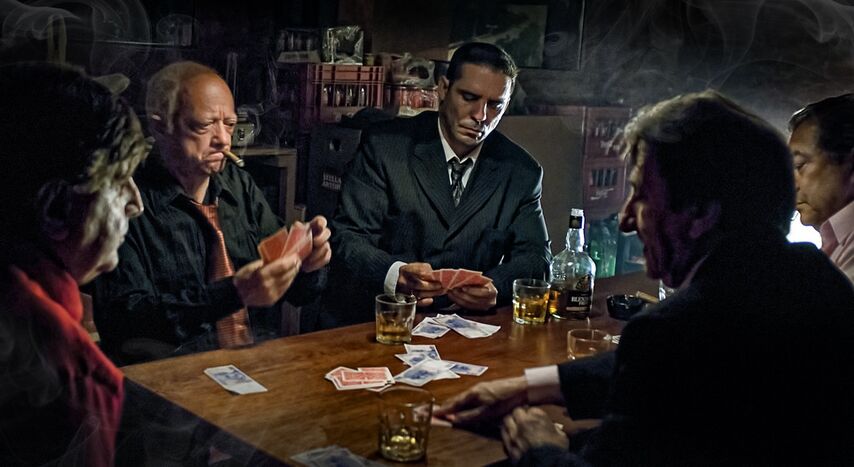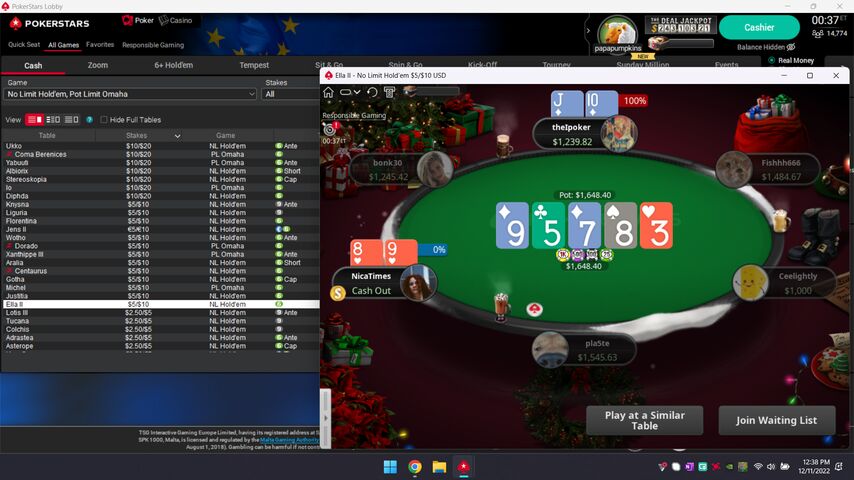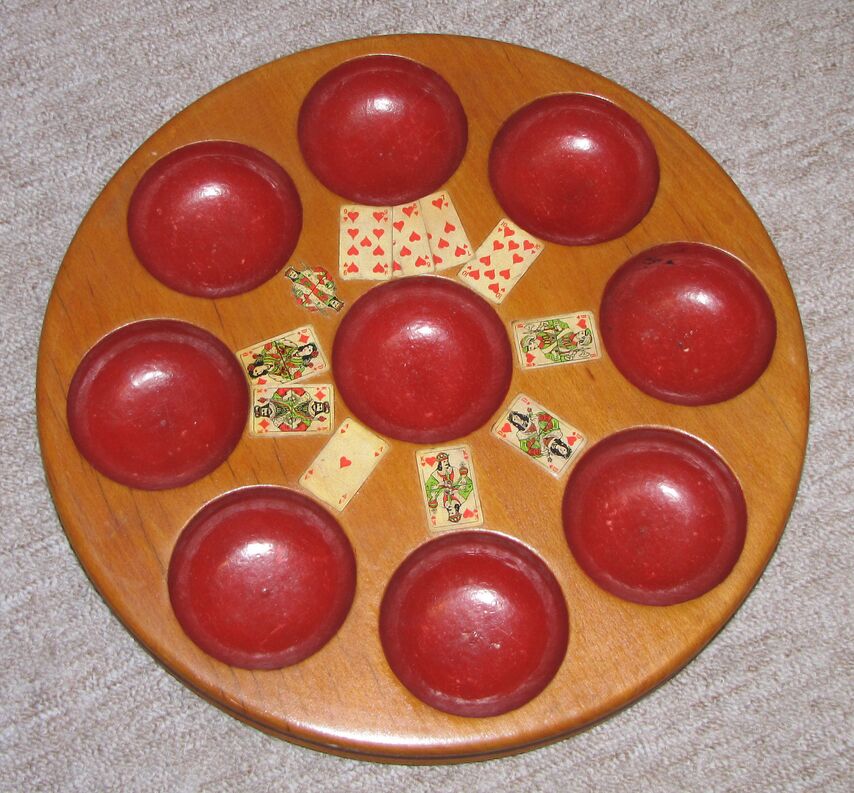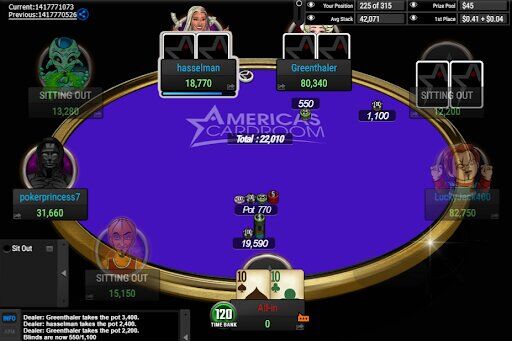The game of poker could have evolved from many different card games. The further back in time we search, the harder it gets to form strong links to the poker games we know today. Games from 10th-century China and 16th-century Persia like As Nas have commonalities, as do French and Italian card games.
Here’s what we know about the history of poker.
Several card games appear to have directly inspired poker. Most aficionados and historians assert that “poque” was a recent predecessor to poker, but we don’t know who invented poker.

We’ll briefly talk about modern poker history first, then explain Poque and Primero, two card games with similarities to poker.
Poker’s Rise to Popularity in Las Vegas
A gentleman named Crandell Addington popularized Texas hold ‘em in Las Vegas back in 1967 and it slowly grew in popularity. If you want to know how was poker invented, you may never get the answer. We do know that Crandell brought it into the spotlight. Before the first World Series of Poker tournament in 1970, Texas hold ‘em was being played at the Golden Nugget’s tables in Las Vegas.
When poker was first televised in 1973, the WSOP was shown to viewers around the world. This marked a launching point for poker and it became a household name, long before online poker came around.
The History of Online Poker
So, when was poker made available online? The first place to play online poker was Internet Relay Chat in 1994. It was advanced for the time and it was the first time that people could go online to play poker with friends remotely. Planet Poker in 1998 was the first real-money site, so this was another landmark moment in poker history.
In 2001, partypoker and PokerStars opened their online poker tables and started exponentially growing. Both companies were there at the beginning and still control a massive market share in online poker.

PokerStars has always been one of the leaders in the industry. They have a huge player base and some of the best software available. They offer a wide range of formats like Texas hold ‘em, Omaha, Stud, Razz, mixed poker games, and many more. You can choose Real Money or switch to Play Money for a free poker experience. If you want to play for real cash, there’s a range of stakes available, from micro to high stakes.
You can host private online Home Games at PokerStars, with full control over the games you play (20 types of poker), the stakes, and who you invite to the table.
Poque: Is This Poker’s European Predecessor?
Poque is widely regarded as the earliest European card game to show similarities to poker formats like Texas hold ‘em. It’s a game of bluffing and betting that was first mentioned in the 1400s, but it may be even older. It’s still played in France and Germany to this day.
James McManus writes about the origins of poque in Cowboys Full: The Story of Poker.
“When French colonists arrived to settle the Louisiana Territory in the 1700s, they brought poque with them.”
Similarities Between Poque and Texas Hold ‘Em
- Bluffing is possible
- Checking
- Betting
- Raising
- Folding (passing)
- Similar Hand Combinations (Quads, Sets, Pairs)
Rules of Poque
There are three rounds in poque and each one is like a mini-game. The second round (Pochen) is the most similar to the poker we play today.
General Rules
Games of poque are played with 3-6 people. If 3 or 4 people are playing then a 32-card deck of French or German cards is used. For games with 5 or 6 players, a 52-card deck is best.
Players also need a Poch board, which has nine different spaces called “pools” for chips to be placed. Each pool corresponds to cards and combinations.

Players pay antes first, putting one chip into each of the nine pools around the board. This is called “dressing” the board. The middle pool, called the Pinke, is left empty for now.
Five cards are dealt to each player, and the dealer turns over a card called the Atout. This card will set the trump suit, which is used for the next round.
Stage One: Melding
Using the trump suit, players will reveal cards and collect the chips in the associated pool.
For example, let’s imagine hearts is the trump suit. If a player reveals the ace of hearts, they win the chips in that section of the Poch board. If a pool is not cleared, it stays for the next round.
Stage Two: Pochen
During the Pochen stage, players decide whether to bet on their hand strength. This part is very similar to modern poker because there is betting, raising, and folding.
A player with a strong hand combination (or a bluff) may say “I’ll knock” and bet a certain amount. Other players can match the bet by saying “I’ll hold it!” or raise by saying “I’ll knock higher!”. Players who don’t want to match the amount can drop out of this stage of the game, but they keep their cards.
Stage Three: Shedding
The first player places the lowest card they have in a certain suit on the table. Other players must place the next highest card while keeping the same suit. If the sequence ends or a player cannot place a card down, the last player to put a card down starts the shedding process again.
Unfortunately, poque is not a game that poker sites offer. It’s too complex for casual players to learn, unlike poker games like Texas hold ‘em and Omaha. If you’re learning how to play poker and want to get into the action, America’s Cardroom will match your deposit 100% (up to $2,000). This site is great for beginners because of its soft field and high rakeback.

Stakes for cash games start as low as $0.01/$0.02 and go up to $200/$400.
Primero: A Distant Relative of Poker?
The first recorded mention of Primero was in Francesco Berni’s poem from 1526, published in Rome. There are plenty of other texts after this time mentioning Primero, but we still don’t know for sure if the game is Italian or Spanish. There’s even evidence that King Henry VII of England had to pay hundreds of shillings to cover his card game losses.
Primero uses 40 cards: K Q J 7 6 5 4 3 2 A

Basic Rules: Players are dealt four cards each (two at a time). There are multiple betting rounds in Primero and anyone can force a showdown as soon as they have a winning combination by tapping the table and announcing “Vada” (go!). If play continues, players receive two more cards, followed by another round of betting. Players get a final two cards after this, bringing their total to 8 hole cards.
Players could bluff by announcing their hand combination to other players, causing them to fold or not bet.
The aim is to form strong combinations like four-of-a-kind, four-card flush, three-card flush, or even a rainbow hand (four cards of different suits). The individual cards also have point values.














